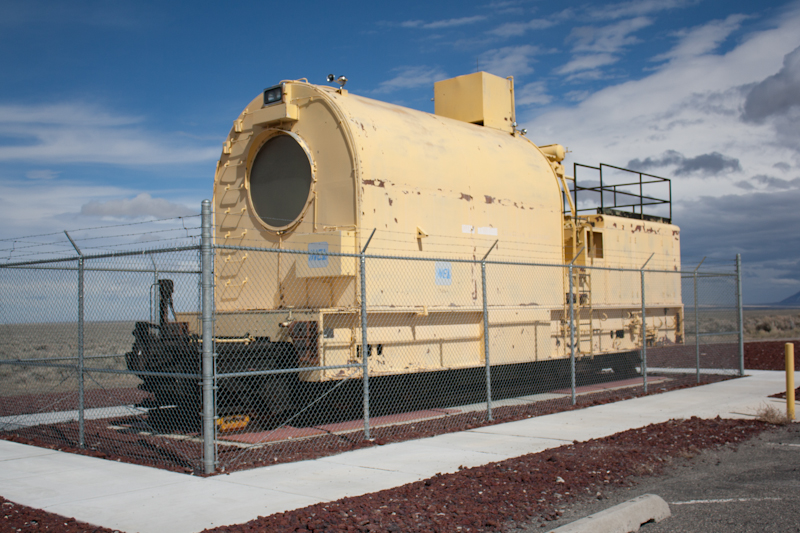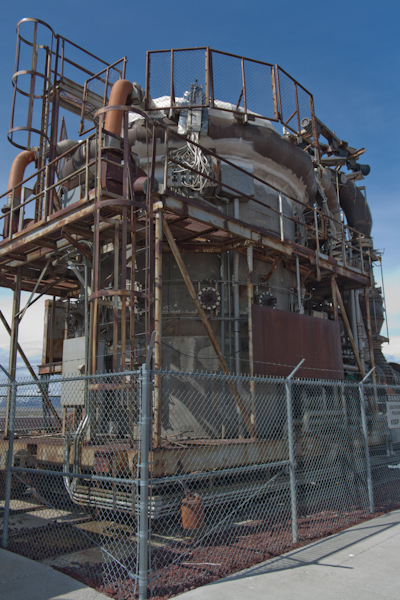“Idaho National Lab has access to training aids for radiological scenarios, safety staff and training facilities for the scenarios we presented to the students. We worked in radiologically contaminated environments and in high radiation fields.”-Captain Daniel W. Arguello, 1st Area Medical Laboratory, 44th Medical Brigade, 20th Chemical, Biological, Radiological, Nuclear, Explosives (CBRNE) Command, U.S. Army

U.S. Army photo, 17AUG2021.
In the middle of the Arco Desert, in Eastern Idaho, lies the U.S. Department of Energy’s 890-square-mile Idaho National Laboratory (INL). The INL has offices in the city of Idaho Falls (known as Idaho Falls Campus), but the actual 890 square mile site (known as Desert Site Facilities) is located in the Arco Desert, about 50 miles west of Idaho Falls. It’s interesting that Google Maps does not show the actual INL site, just the offices in Idaho Falls. Google Maps does show EBR-1, the world’s first nuclear reactor (and site of the world’s first deadly nuclear meltdown), which is part of the 890 square mile INL site.
Due to the decades of radiation contamination on the INL site, it has become the logical choice for training military personnel on how to deal with radiation contamination environments: “The focus of the training is to train Army and sister service personnel to respond to accidents and incidents involving radiation or radioactive materials, conduct radioactive source recovery operations and provide radiological site assessments of areas suspected to be contaminated with radioactive material.”-First Lieutenant Joshua D. Salazar, 1st Area Medical Laboratory, 44th Medical Brigade, 20th CBRNE Command, U.S. Army
In the middle of August, 2021, the annual Radiological Hazards Operations Course (known to FEMA as a HOT [Hands On Training] Course) was taught by the U.S. Army’s First Lieutenant Joshua D. Salazar and Captain Daniel W. Arguello. They are with the 20th CBRNE Command, which is headquartered on Aberdeen Proving Ground, Maryland. The training is a way of preparing for future warfare: “Through this course, these outstanding health physicists are helping to keep our military ready to fight and win in an all hazards environment.”-Colonel Matt Grieser, 1st Area Medical Laboratory, 44th Medical Brigade, 20th CBRNE Command, U.S. Army
The Idaho National Laboratory (INL) used to be known as INEEL, before that INEL, before that ERDA and before that NRTS. The name changes coincide with changes in government agencies and contractors who run the site. You can actually take a tour of the historical and deadly site.
July 2021: More than 2-thousand drums of nuclear waste being sent from INL to WIPP
May 2021: INL meets agreement to store used naval nuclear fuel
2020: Sisters remember living on INL Arco desert site during World War Two
2017: INL groundbreaking for new Spent Fuel Handling Facility
Radiation Fall-Out 2016: $1.6-billion estimated cost for new spent fuel handling facility
I-N-L ADMITS ITS RADIATION DETECTORS DON’T WORK!
Radiation Fall-Out 2015: I-N-L ADMITS “NOBODY REALLY KNOWS WHAT’S GOING ON.”
Radiation Fall-Out 2014: I-N-L VIOLATES OWN RULES!
2011: ROBOT FROM I-N-L NOW WORKING AT FUKUSHIMA NUKE DISASTER SITE
I-N-L OFFICIAL STATEMENTS are OMINOUSLY SIMILAR TO STATEMENTS MADE BY JAPANESE NUCLEAR OFFICIALS
IDAHO MAN ESCAPES FUKUSHMIA DAIICHI NUCLEAR PLANT
GHOSTLY NUKE TRAIN ROLLIN’ ‘CROSS IDAHO DESERT
ANCIENT NUCLEAR POWERED JET ENGINE FOUND IN IDAHO DESERT, PROOF OF ANCIENT ALIEN VISITORS?


